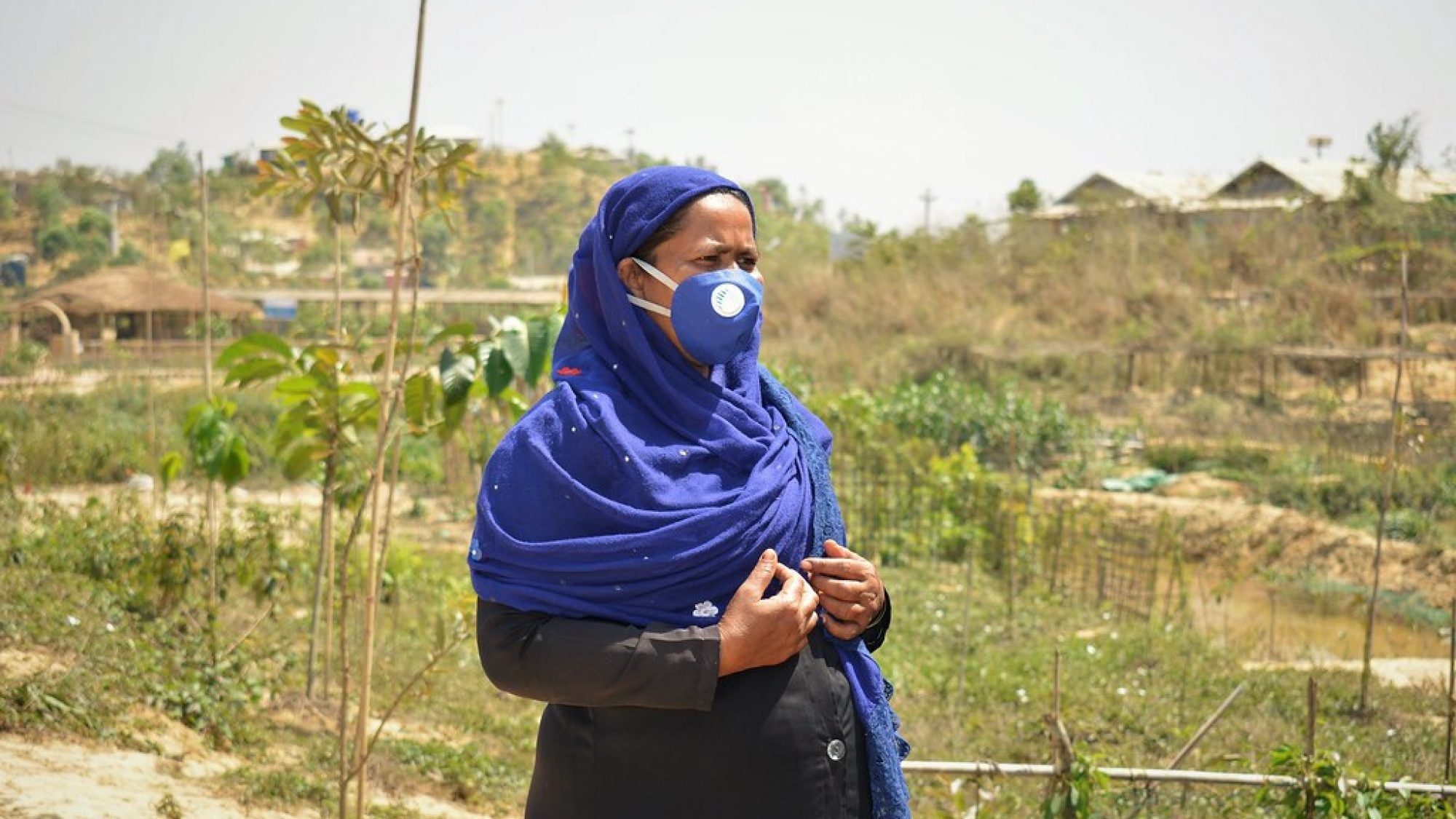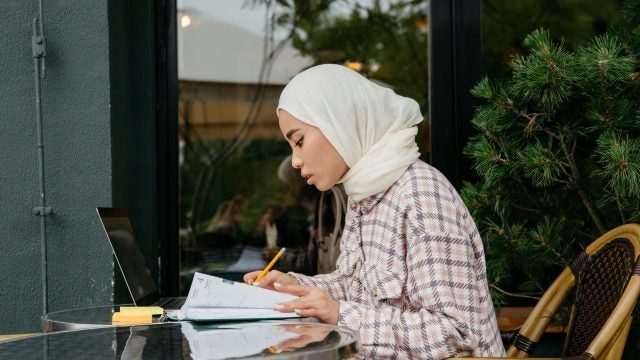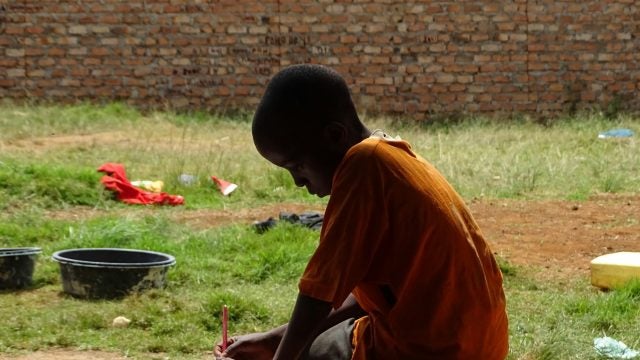
Title: Climate Change and COVID-19: Why Gender Matters
The COVID-19 pandemic highlights the important intersections of climate change, food security, migration, and socio-economic inequalities. An understanding of the gendered dimensions of these interconnected global concerns is crucial for developing a post-COVID recovery plan that ensures a more equal world and bolsters its resilience.
In many ways, the year 2020 spotlighted the compounding issues societies must reckon with, including climate change, COVID-19, and sustained inequality. Today, we are witnessing the drastic consequences of climate destabilization resulting largely from human actions: frequent heat waves, intense flooding and droughts, water crises, increased biodiversity loss, reduced agricultural productivity, and faster disease transmissions. Many of these underlying causes of climate change also increase the risk of future pandemics. For example, deforestation leading to loss of animal habitat forces animals to migrate and brings them into closer contact with other animals or people, increasing the likelihood of zoonotic transmission.
The effects of climate change are being felt throughout the world; its worst impacts are particularly damaging in poorer regions, such as those in sub-Saharan Africa, Latin America, the Caribbean, and Asia. Severe and prolonged droughts have already affected the Sahel and most of East Africa. Meanwhile, severe storms and flooding are causing extensive damage across the world, and climate change-related food insecurity has resulted in thousands of deaths. Climate change has also intensified water scarcity, reaching critical levels in seventeen countries. Major rivers no longer reach the ocean, while reservoirs and lakes dry up and underground water aquifers are depleted. As climate change continues, drier areas will only be more prone to drought and humid areas more prone to flooding. As food, water, and other resources become increasingly strained, fierce competition over scarce natural resources is likely to escalate. In fact, natural disasters and climate-related conflicts have already dislocated millions of people. In 2017 alone, the UNHCR estimates about 30.6 million new displacements associated with conflicts across 143 countries and territories.
Making Gender Visible in Climate Change Issues
It is fundamental to note that these aforementioned issues are gendered. Gender disparities in access to resources such as land, credit, and extension training have put many women at greater risk with regards to maintaining their livelihoods and accessing food and water. Climate change not only reflects pre-existing gender inequalities, but it also reinforces them. The pivotal role of women in food security is well-documented. Recent estimates for Africa indicate that women provide 40 percent of labor in crop agriculture while at the same time providing labor in small livestock, poultry, and other food production-related activities. Many are income earners, serving as breadwinners in female-headed households while performing most of the household and family care work. However, gender inequalities in the ownership and control of household assets, gender discrimination in labor markets, and rising work burdens due to male out-migration undermine women’s income generating capabilities. Much of women’s work in food production and food access remain statistically invisible because conventional economic indicators fail to capture the significance of their contributions—contributions that are also overlooked in policymaking.
The gendered consequences of climate change include effects on migration flows. Migration has diversifies livelihoods and serves as an important coping mechanism through the promise of remittances or a better life. Internal and international migrations involve individuals and families seeking protection as refugees from the violence in their communities and states and those whose livelihoods are threatened by natural or man-made factors such as natural disasters, economic crises, or political instability. More recently, the increased frequency of extreme weather events and high temperatures have led to climate-induced migration flows exemplified by the influx of climate refugees seeking entrance into the United States in response to hurricanes, and rural-urban migration in Vietnam in response to typhoons.
The ability of households and their members to relocate varies depending on their resources and their vulnerability to the risk of falling further into poverty. Both the gendered dimension of migration and the climate shock impact on migration decisions are nuanced. Migration can challenge certain social expectations and cultural norms. Household care responsibilities and gender roles may restrain women from migrating. In the case of increased conflicts over natural resources, for instance, women are less able to flee than men as they are often responsible for taking care of the children. In Indonesia, climate shocks have promoted more migration among men. Similarly, male migration in Ethiopia and Nigeria has increased with drought and weather variability, while women are forced to stay put due to financial constraints. On the other hand, increasing demands for care workers in countries with high female labor force participation and aging populations provides employment opportunities for women, fueling international migration flows. In 2019 alone 48 percent of the 272 million (3.5 percent of the world’s population) international immigrants were female.
Gender and the COVID-19 Pandemic
The trends in climate-induced problems have foreshadowed the severity of the crises induced by the COVID-19 pandemic. The pandemic has affected all aspects of everyday life and work and has placed a heavy toll on families, communities, and economies. It threatens food security for tens of millions of people. The COVID-19 crisis, like the climate crisis, is causing disparate impacts across nations and social groups. It poses a much greater risk to elderly persons and those with underlying risk factors. Countries with fewer economic resources and weak social and health infrastructure are at a higher risk, not only in the short term but also in the longer term. Politically underrepresented groups suffer the most from lockdowns, rising unemployment, and unexpected medical costs, exacerbating existing economic inequalities.
More importantly, the COVID-19 crisis also unravels and further amplifies gender inequalities. As millions of people lose their jobs or become forced to work from home, many, especially mothers, are compelled to simultaneously juggle work and childcare responsibilities. Unpaid care work has increased not only with children out of school but also with the heightened care needs of the elderly and the sick, especially when health services are either inaccessible or overwhelmed. Ultimately, many women are earning less, saving less, working precarious or insecure jobs, or living close to poverty.
Gender-based violence is rapidly increasing as well. Many women are being forced to “lock down” at home with their abusers at a time when support services for survivors are being disrupted or made inaccessible. In Peru, the imposition of lockdowns has led to a 48 percent increase in phone calls to the helpline for domestic violence.
The COVID-19 pandemic also exposes the precarious employment conditions of many “essential workers” whose jobs increase their risks of infection and are often employed on temporary contracts. Migrants are among the key workers who deliver essential services; they play a critical role in essential sectors in many high-income countries working as crop pickers, food processors, care assistants, and cleaners in hospitals. These migrant workers help facilitate systemic resilience to threats, but their own vulnerabilities go unaddressed.
Conclusions
We cannot afford to ignore the particular vulnerability of women when analyzing the effects of climate change on food security and migration, and we cannot ignore their susceptibility to food insecurity and violence. As governments and policymakers grapple with the challenge of bolstering resilience, they will need to think beyond the effects of these shocks on markets and to pay more attention to the heightened social and economic inequalities. Such an objective requires a comprehensive, gendered approach that considers women’s roles in the provision of essential goods and services and the differentiated impacts of climate change.
Fiscal stimulus packages and emergency measures have been put in place by many countries to mitigate the impacts of COVID-19, but it is crucial that these responses as well as post-COVID recovery plans put women and girls’ interests and needs, rights, and protection at their center. Such responses and plans should include expanded public investment in the care delivery system, from childcare to healthcare to eldercare, which the COVID-19 crisis has disrupted. There is also a need for gender-sensitive analyses of the effects of economic, social, and migration policies along with the development of legal frameworks that effectively address domestic violence. Meaningful participation of women in policy discourse and dialogue addressing climate change is vital as they are disproportionately vulnerable.
Governments should also undertake and support the collection of sex-disaggregated data on various economic, social, and climate-change related indicators as the lack of data is sometimes used as an excuse not to implement gender-responsive policies. As UN Women has stated, “it is not just about rectifying long-standing inequalities but also about building a more just and resilient world.”
Maria S. Floro is professor of economics and a co-director of the Program on Gender Analysis in Economics (PGAE) at American University, Washington DC. She currently leads the Care Work and the Economy Project.
Image Credit: UN Women Asia & the Pacific, Creative Commons License

Amid stalled U.S. federal climate engagement and intensifying transatlantic climate risks, subnational diplomacy has emerged as a resilient avenue for cooperation. This article proposes a Transatlantic Subnational Resilience Framework (TSRF)…

The 1997 hijab ban in Türkiye left lasting effects on Muslim women’s psychological, social, and religious identities, shaping their experiences across academia, bureaucracy, and politics. Evidence from interviews…

This article advances the idea that teaching children their mother tongues and learning adjacent national languages offers better prospects for consolidating nation-building and contributing to cultural preservation. Kenya’s case illustrates…